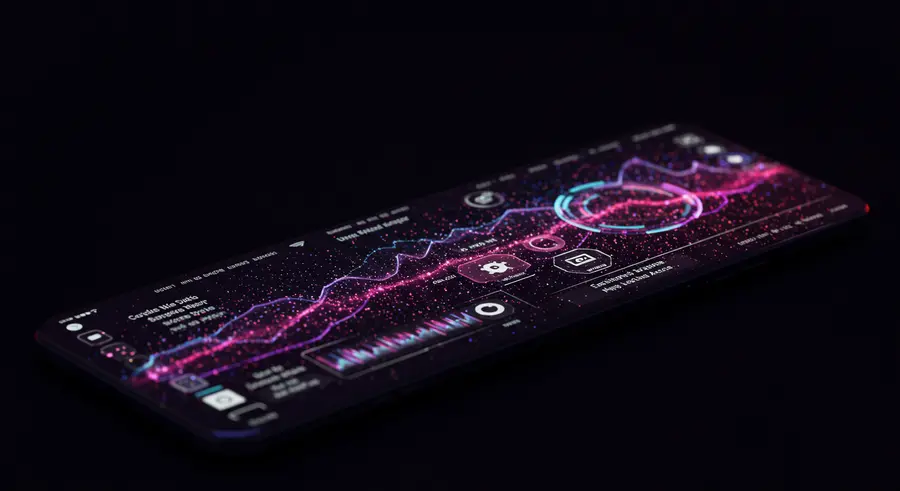Appearance

Welcome, tech pioneers and web enthusiasts! 👋 Today, we're taking a leap into the near future to explore the exciting evolution of Progressive Web Apps (PWAs). While PWAs have already revolutionized web experiences by bridging the gap between web and native applications, their true potential is now being unlocked through the powerful synergy of Artificial Intelligence (AI) and enhanced hardware access. Get ready to discover how PWAs are becoming more intelligent, more capable, and more indispensable than ever before!
🚀 The PWA Revolution: A Quick Recap
Before we dive into the future, let's briefly revisit why PWAs are so impactful. As we've discussed in our previous article, The Power of Progressive Web Apps (PWAs), PWAs offer a host of benefits:
- Reliability: Instant loading, even in flaky network conditions, thanks to service workers and intelligent caching.
- Speed: Optimized for performance, providing a smooth and responsive user experience.
- Engagement: Features like push notifications, home screen installation, and full-screen experiences keep users coming back.
These core tenets have made PWAs a go-to solution for businesses and developers aiming to deliver app-like experiences without the hurdles of app store distribution.
🧠 AI Integration: Making PWAs Smarter
The integration of Artificial Intelligence is transforming PWAs from powerful web applications into intelligent, adaptive companions. Here's how AI is enhancing PWAs:
1. Personalized User Experiences
AI algorithms can analyze user behavior, preferences, and context to deliver highly personalized content and features. Imagine a PWA for an e-commerce store that learns your style, predicts your next purchase, and offers tailored recommendations in real-time. Or a news PWA that curates articles based on your reading habits and interests, ensuring you always see what matters most to you.
- Example: A PWA for a travel booking platform could use AI to understand your travel patterns, suggest destinations based on your past trips and current events, and even recommend local activities using predictive analytics.
2. Enhanced Accessibility and Inclusivity
AI is making PWAs more accessible to a wider audience. Speech-to-text and text-to-speech capabilities, powered by AI, can be seamlessly integrated, allowing users with disabilities to interact with the application more naturally. AI can also adapt UI elements and content presentation based on user needs, such as adjusting font sizes, color contrasts, or simplifying language.
- Example: A language learning PWA could utilize AI for real-time pronunciation feedback, adapting the difficulty of exercises based on the user's progress and learning style.
3. Predictive Analytics and Proactive Assistance
With AI, PWAs can move beyond reactive responses to proactive assistance. By analyzing historical data and user patterns, AI can predict user needs and offer solutions before they are explicitly requested.
- Example: A PWA for personal finance management could use AI to predict upcoming bills, suggest budgeting adjustments, or even flag unusual spending patterns, helping users stay on top of their finances.
🔌 Enhanced Hardware Access: Bridging the Web-Native Divide
Project Fugu, an initiative by Google, Microsoft, Intel, and others, is a testament to the ongoing effort to expose more native device capabilities to the web. This means PWAs are gaining access to hardware features once exclusive to native applications, blurring the lines even further.
1. Advanced Camera and Microphone Capabilities
Beyond basic photo capture, PWAs can now leverage advanced camera features like barcode scanning, facial recognition (with user permission), and augmented reality (AR) experiences. Microphone access can enable sophisticated voice commands, real-time audio processing, and even integration with AI-powered virtual assistants.
- Example: A retail PWA could allow users to try on clothes virtually using AR and their device's camera, or a music creation PWA could use advanced microphone access for real-time audio effects.
2. Biometric Authentication
Fingerprint and facial recognition (WebAuthn API) provide a secure and seamless way for users to authenticate within PWAs, eliminating the need for cumbersome passwords. This significantly enhances security and user convenience.
- Example: A banking PWA could offer biometric login, making transactions faster and more secure.
3. NFC and Bluetooth Connectivity
Access to Near Field Communication (NFC) and Bluetooth enables PWAs to interact with physical devices and environments. This opens up possibilities for smart home control, device pairing, and even contactless payments.
- Example: A PWA for a smart home system could allow users to control lights, thermostats, and other devices directly from their browser, or a fitness PWA could sync with a heart rate monitor via Bluetooth.
4. File System Access and Local Storage Enhancements
Improved file system access allows PWAs to read and write files directly on the user's device, enabling more robust offline capabilities and rich content creation experiences. Enhancements to local storage mechanisms ensure larger and more complex datasets can be managed efficiently offline.
- Example: A PWA for graphic design could allow users to save and open design files directly from their device, or an offline document editor PWA could seamlessly store and retrieve large documents.
🌟 The Future is Intelligent and Integrated
The combination of AI integration and enhanced hardware access is propelling PWAs into a new era. They are no longer just "websites that act like apps"; they are becoming truly intelligent, context-aware, and deeply integrated with the user's device and environment.
This evolution means:
- Richer User Experiences: More immersive, personalized, and responsive interactions.
- Increased Productivity: PWAs can offer more powerful tools and workflows.
- Broader Reach: Businesses can deliver app-like experiences to a wider audience without the complexities of native app development.
As web standards continue to evolve and browser support for these advanced features matures, the intelligent PWA will become the norm, redefining how we interact with the web and our devices. The future of web development is here, and it's progressively brilliant! ✨